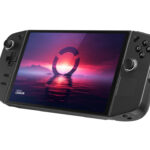
Most users who’re acquainted with GPS tend to initially try it out on their phones. With competitive apps like Google Maps and Nokia Maps – which has got offline and free navigation –, dedicated Personal Navigation Devices (PND) haven’t seen a surge. But if you’re looking for a device that won’t allow you to get lost next time you’re on an expedition trip in your vehicle, MapmyIndia has got quite a few PNDs on offer. We tried out the 4.3-inch Vx140 and 3.5-inch Lx130 and this is what we found.

Both PNDs have similar designs. Apart from the difference in screen sizes, Vx140 and Lx130 have mini-USB charging, 2.5mm headphone jack, microSD card slot on the right side, loudspeakers at the back and the start button on the top.
MapmyIndia PNDs come with the same accessories like pre-loaded microSD card with maps, GPS unit, wall and car charger, windshield mount, USB cable and user manual.

Using the device is a breeze. The main screen consists of Navigation that will start the GPS, Multimedia, Settings and Features. The Multimedia menu is further segregated into Music, Videos, Pictures and Documents. Features menu is exclusive to Vx140 that includes couple of games (Solitaire and Tetris) and Bluetooth. In addition to function as a PMP, Vx140 also doubles up as a Bluetooth handsfree.

Moving on to its navigational prowess, I found that both these devices use SiRF chips. For the uninitiated, SiRF is a company that manufactures GPS chipsets and software. Although the MapmyIndia website says both have the same SiRF Atlas chipset, the box claimed Atlas A3 for Vx140 and Atlas IV for Lx130. Atlas IV seems to be superior but during our tests, Atlas A3 equipped Vx140 had a GPS fix quicker than Atlas IV toting Lx130. It took around 3-5 mins to get a fix after turning the Vx140 on while Lx130’s duration varied from 10-15 mins. However, once the lock is set, everything is good to go.

The user interface of both these devices is pretty decent. Using GPS, finding Point of Interests (POIs), recent destinations, favorite destinations is really easy on the latest version of the maps. There’s a QWERTY keyboard along with buttons decent enough to use without a stylus. However, if you’re more of a styli-kind, MapmyIndia also bundles a stylus.

The turn-by-turn navigation calculates the route automatically and even re-calculates if you missed a turn or went through the wrong turn. The calculated route was almost accurate and by almost accurate means, it faltered during the calculation of some routes. For instance, the roads that were initially two-way but are now one-way; the GPS still calculated on the basis of the old route. This happened on very few occasions but otherwise the directions and the calculations were spot on.
The biggest gripe I think both PNDs suffer from is the battery life. The Vx140 has a 1450mAh and Lx130 is 1000mAh battery but both managed to run for around 2 hours with GPS and Bluetooth on (Vx140 only). This means you’ll have to keep a car charger handy all the time if you want to reach your destination without losing the way.
To wrap this up, MapmyIndia is one of the few companies that has ventured into dedicated PNDs and while GPS usage is picking up, one may argue its need when considering its price to use ratio. For Rs. 11,990 (Lx130) or Rs. 14,990 (Vx140) one may feel shelling out more on a phone that can function as a full GPS device, make calls, surf internet and lot more but if you’re looking for a no-fuss navigation, these are the devices to look for.
Rating:  (both)
(both)
Pros: Simple UI, Easy Navigation, PMP features
Cons: 2.5mm jack, Price, Battery Life





I am pretty happy with the Vx140. Truly value for money product. Dedicated PND makes sense to me! Phone is best used as a voice device+ maybe a bit of surfing.